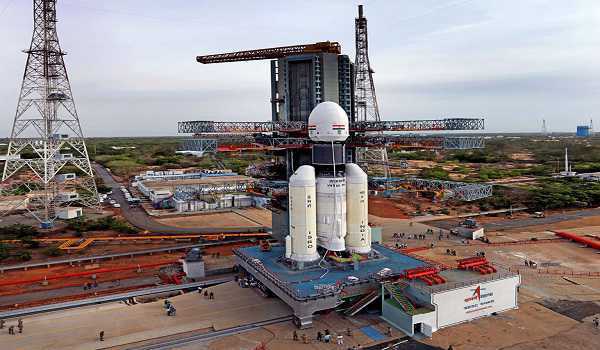As ISRO is gearing up for the second lunar mission Chandrayaan-2 on July 15, there were several challenges involved in a moon landing.
First and foremost was accuracy in trajectory as the distance to the moon was approximately 3.844 lakh km. Ensuring trajectory accuracy while navigating such a large distance poses many challenges as trajectory was influenced by the non-uniform gravity of the earth and the moon, gravitational pull of other astronomical bodies, solar radiation pressure and the Moon’s true orbital motion, ISRO said in its website.
Deep Space Communication : Owing to the large distance from earth and limited on-board power, radio signals used for communication are weak with heavy background noise, which needs to be picked up by large antennas.
Trans Lunar Injection (TLI) and Lunar Capture : Chandrayaan-2 will perform a series of TLI burns for raising its apogee successfully to reach the vicinity of the Moon’s orbit. As the Moon’s location is continually changing due to orbital motion, the intersection of Chandrayaan-2 and the Moon’s path has to be predicted sufficiently in advance with a high level of accuracy.
As the Moon approaches the apogee of Chandrayaan-2 on-board thrusters fire precisely to reduce its velocity for lunar capture. The margin of error in these calculations and manoeuvres is very narrow.
Orbiting around the Moon : Lunar gravity is ‘lumpy’ due to uneven mass distribution under its surface. This influences the orbit of the spacecraft. Also precise knowledge of the thermal environment at orbital altitude is essential for keeping on-board electronics safe.
Soft Landing on the Moon : This is the most challenging part of the mission and is divided into ‘rough braking’ and ‘fine braking’. Variation in local gravity has to be factored into the lunar descent trajectory. The on-board NGC and Propulsion system has to work in unison, autonomously and automatically for a successful landing.
Further the landing site, landscape features should not result in a communication shadow area. Lunar Dust : The lunar surface is covered with craters, rocks and dust. Firing of on-board engines close to the lunar surface results in backward flow of hot gases along with dust. Lunar dust is miniscule and is hard, barbed and jagged. Its negative charge makes it stick to most surfaces, causing a disruption in deployment
mechanisms, solar panel performance and NGC sensor performance.Extreme Temperatures and Vacuum : A lunar day or night lasts 14 earth days. This results in extreme surface temperature variations. Moreover, the ambient pressure of lunar surface is a hard vaccuum. This makes the lunar surface an extremely hostile environment for lander and rover operations.




